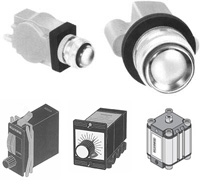How Does a Pneumatic Control System Work?

Add a cursory glance. There are many different types of pneumatic system components. Although each component is unique and serves a different function, it is all designed to ensure optimal performance of the entire system. In this article, we want to discuss the integral role those different components play in maintaining the performance of your pneumatic control system. Pneumatic movements are defined as using air or gas under pressure to transmit power from one space to another. In short, pressurized gases enables motion within these machines. The force experienced within a pneumatic control system is pushing, pulling, rotating, and regulating the system's drives. To do this, there needs to be a device designed to compress atmospheric air to create a sustainable power source. Pneumatic system components are designed to fit fixed installations, including factories and manufacturing facilities.
- An air compressor is one of the most important parts of a system because it is responsible for air exhaustion. In other words, you can consider the air compressor and exhausting air mechanism. This piece of equipment takes in outside air and then compresses it to harness the power within your system. Without this device, a pneumatic control system would never have adequate power.
- Pneumatic cylinders or mechanical devices are designed to produce force using compressed air. Cylinders become actuated, and compressed air fills tubes at one end of the piston. Once full, it imparts a force on the piston, which causes the piston to move.
- Pneumatic valves make sure your pneumatic system runs efficiently. The two above devices are about generating power, whereas a pneumatic valve is about controlling it and utilizing it in ways that benefit you and the system.
Related Reading


- Ellis/Kuhnke Controls
132 Lewis Street Unit A-2, Eatontown, N.J. 07724
Phone: 1-800-221-0714
Fax: 732-291-8154
Email: Info@ekci.com
- Home Pneumatic Controls Technical Info CAD Drawings Contact Us Pneumatic Timers Blog Site Map
